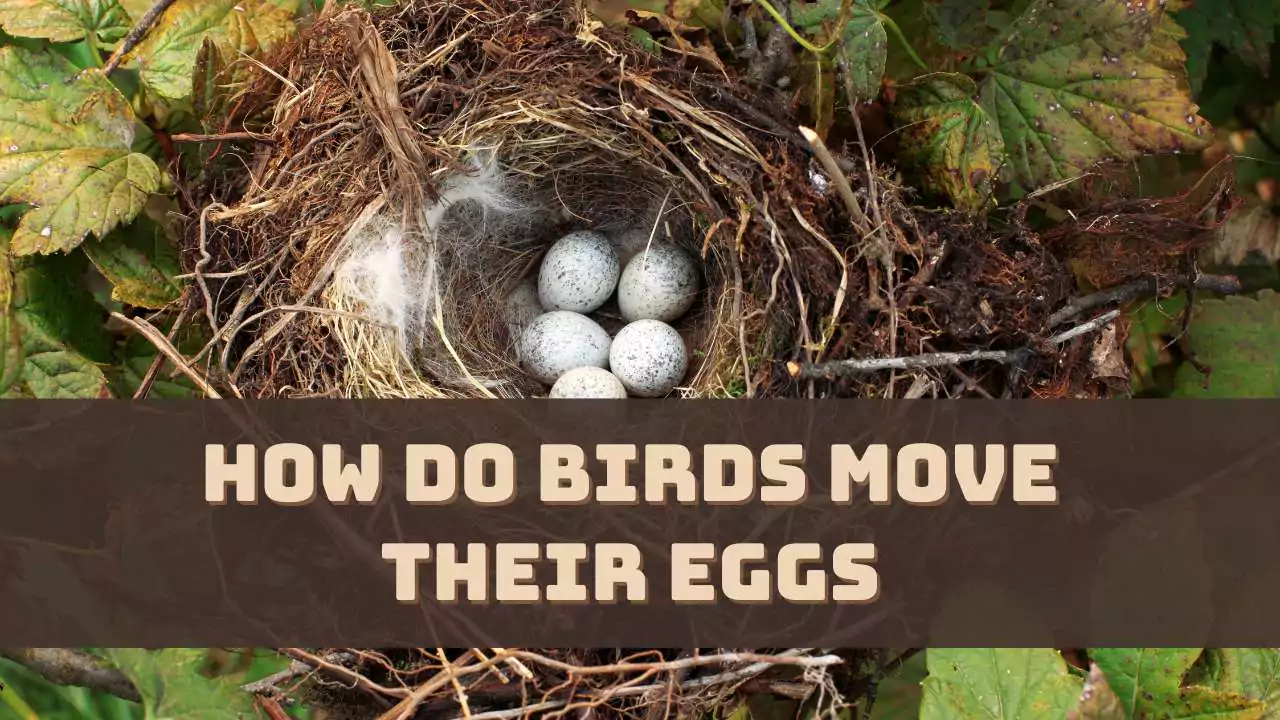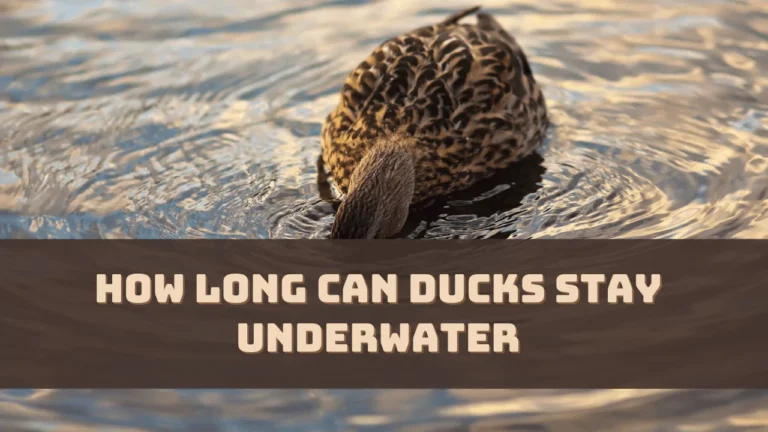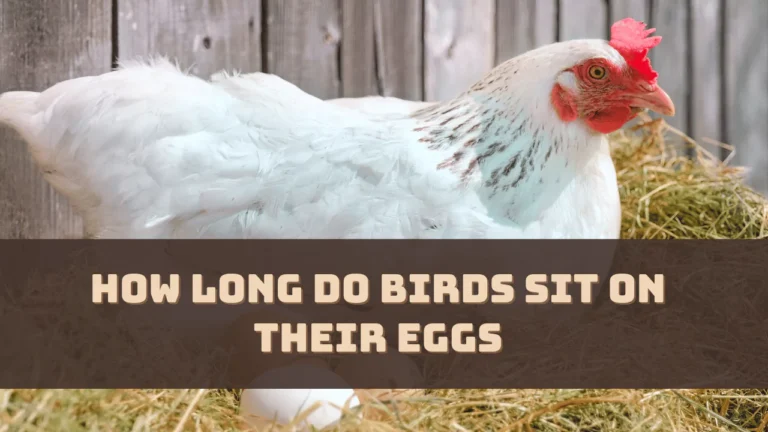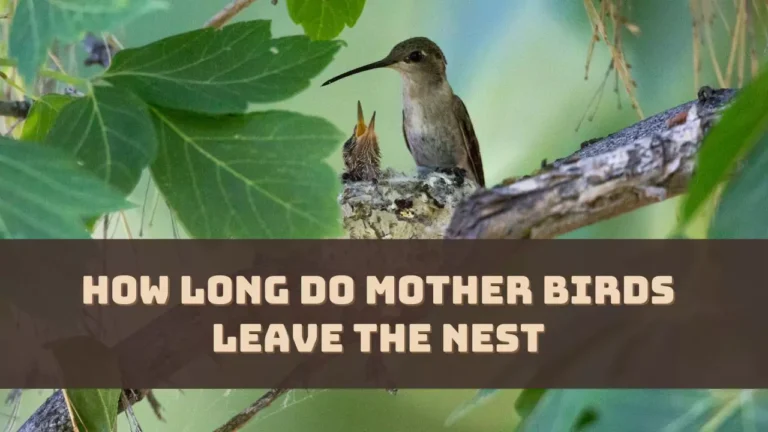Birds move their eggs, either due to – finding a better nesting spot, the need to relocate the clutch due to safety reasons, or just a natural instinct. Birds roll the eggs gently using their beaks or carry them on their feet while shifting the eggs from one location to another.
So, let’s dive deep and understand how these birds manage to move the eggs using their skills, remarkable strategies, and commitment to protect the unhatched young ones.
How Birds Build a Nest?
Birds first create the base of the nest, for which they wear twigs and arrange the stick, forming a strong foundation, then to add comfort, softer elements are added inside the nest, such as leaves, grass, and feathers. They can choose a tree, ledge, or ground to build a secure and comfortable nest.
What is the Advantage of Building a Nest?
A nest can help to maintain a temperature-controlled environment, so birds take precautions while choosing the material for building the nest. They arrange the nest strategically so that the humidity can also be controlled. It also increases the survival chances of the eggs as the nest forms a protective shield or barrier against external influences. It also reduces the risk of predation as the nests are built in such a way that it becomes difficult for others to locate them.
Why Do Birds Need to Move Their Eggs?
Birds can move their eggs due to several reasons, such as –
- Disturbance in their nest – When a nest gets disturbed or damaged, either due to natural calamities or man-made activities or due to predator attack, the birds need to move the eggs to a safer location.
- Avoiding predators – If birds detect that there are predators around the nest, then they can try to move the eggs to a secured place.
- Improving nesting conditions – Birds are always on the lookout to find a nesting place, which has better insulation, shade, and availability of food and water. As soon as they are able to locate a better nesting area they move the eggs.
- Brood Parasitism – Some species of birds lay their eggs in other birds’ nests so the host bird is unable to detect their own egg, move, or abandon them.
- Overcrowded nest – If the nest has too many eggs and gets crowned, then birds tend to change the nesting site to rearrange the eggs so that every egg can get equal attention.
What Strategies Do Birds Apply to Move Their Nest?
Based on the circumstances and physical conditions, birds have developed different strategies to move their eggs, such as –
Beak Transport
Beak transport is the most common way of moving eggs from one nest to another. The eggs are carefully grasped between their beaks and carried to a new location. This strategy is only applied by birds who have small legs, strong and curved beaks, and can grasp objects easily and travel over short distances.
In this process, the birds secure the eggs using their tongue and so the weight of the egg is evenly distributed around the beak. Often, they also use their saliva as a temporary adhesive to make the grip strong, while they are flying over to the new nest.
Foot Transport
Foot Transport strategy is used by birds that are larger and have strong and sturdy feet. The most common birds seen to apply this technique are waterfowls and raptors. They have the ability to carry multiple eggs at the same time. During this process, the bird scoops the eggs with their feet carefully without any intention of breaking them.
The eggs are then cradled against their bodies and using either their feathers or any kind of nesting material they secure the eggs while carrying them over short distances. Some birds are also seen to roll the eggs on the ground using their feet or wings and move them to a new location, such as Kildeer.
Nest Material Transport
Some species of birds are also seen to move the entire nest to a safe location when they face a threat or disturbance in the present nesting site. The birds are seen to use their beak and feet to first dismantle the present nest and carefully transport every single component to the new location, including the eggs. Some birds are also seen to carry the entire nesting material on their back while rolling the eggs across the ground.
How Do the Parent Birds Coordinate to Move the Eggs?
Often, the parent birds are also seen to form a team where they coordinate and with collaborative efforts, the eggs are moved to a safer location. The strategies applied are:
Role Sharing
In this teamwork, one of the parents is responsible for moving the eggs whereas the other protects or leads the way. The male is usually seen to distract the predators, meanwhile the females move the egg to a new location.
Nest Defense
When one parent is moving the egg, the other parent stays near the nesting site guarding and protecting it from any threat. This strategy is maintained so that both the parents and the eggs can stay safe during the relocation process.
Nest Building
After moving the eggs, both the parents try to build the new nest at the earliest or if they have relocated the previous nest, then they try to modify it so that the eggs can continue to develop in a comfortable and secure environment.
What Adaptations Birds Go Through While Moving The Egg?
While moving the eggs birds use their natural instincts and adaptation techniques to protect and successfully transfer the egg to the new location, such as –
Develop Camouflage
Some bird species can conceal their eggs, through the technique of camouflaging during the moving process. Thus, they are hard to get tracked by the predators, and the eggs can thrive without any threat.
Nest Selection
Birds ensure that the new nesting site is suitable for the development of the egg and the young one can hatch and develop with any risk. They choose a nest site that has accessibility, safety, and quick access to food and water.
What are the Risks Faced by Birds While Moving the Eggs?
When the bird is moving the eggs, certain potential challenges and risks come along, such as –
Eggs Getting Damaged
The most common risk of moving an egg is that it can break, being a delicate item. So, birds need to be very careful and there should not be any cracks or punctures, otherwise, the embryo inside can get compromised.
Predation
The birds as well as the egg become vulnerable during the egg moving process and predators can easily spot them and attack them, as a lot of disturbance is caused.
Exposure to Natural Elements
If there is a sudden change in the weather, the temperature drops, there are strong winds, precipitation, or any harsh environmental conditions, then the eggs get exposed to risk while the birds are trying to move, and the survival chance of the egg also reduces.
Who are Fixed Nesting Species vs. Mobile Nesting Species?
Birds can be categorized as fixed nesting species and mobile nesting species based on their nature of building nests.
- Fixed Nesting Species are the ones who return to the same nest during the breeding period, every year and they keep repairing and maintaining it.
- Mobile Nesting Species are the ones that do not have any fixed nests and build nests in new places every year during the breeding season. Some even lay their eggs directly on the ground without the need for any nesting structure.
What is Egg Turning?
Egg turning is quite different from moving the eggs, here the eggs stay in the same place but they are carefully rotated within the nest. This process ensures that the egg gets uniform heat and also prevents the embryos from sticking to the inner membrane of the eggshell.
Do Birds Need to Incubate an Egg All the Time?
No, birds do not need to sit on the egg all the time, rather they can incubate the eggs periodically. Birds take short breaks from the incubation process while foraging for food.
What is a Brood Ejection?
Brood ejection is a process, where the bird pushes their eggs out of the nest and there are two theories based on this –
- The bird tries to get rid of the non-viable eggs as they can detect which egg is not going to hatch or which egg is infected. This is done to protect the other eggs from getting infected.
- If the predator is around, they push one or two eggs to distract them, so that they don’t attack the entire clutch or nest.
What Happens if You Touch an Egg in the Nest?
If you touch an egg, then the parent birds might abandon the egg. Birds keep a cue, when the egg is going to hatch, but when you touch it, foreign elements come in contact with the eggshell, disrupting these cues. The birds assume that something is wrong with the egg and they leave the nest.
Do Birds Steal Eggs from the Host Bird’s Nest?
Yes, many varieties of bird species are seen stealing eggs from other bird’s nests as eggs are easy to grasp. Eggs also have high protein content, which fulfills the daily energy requirement of these birds.




